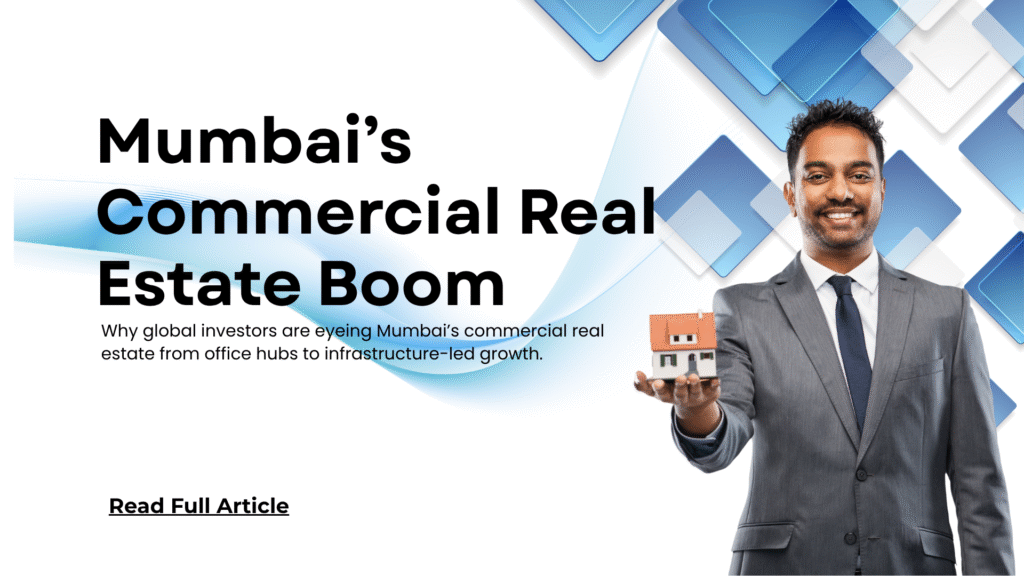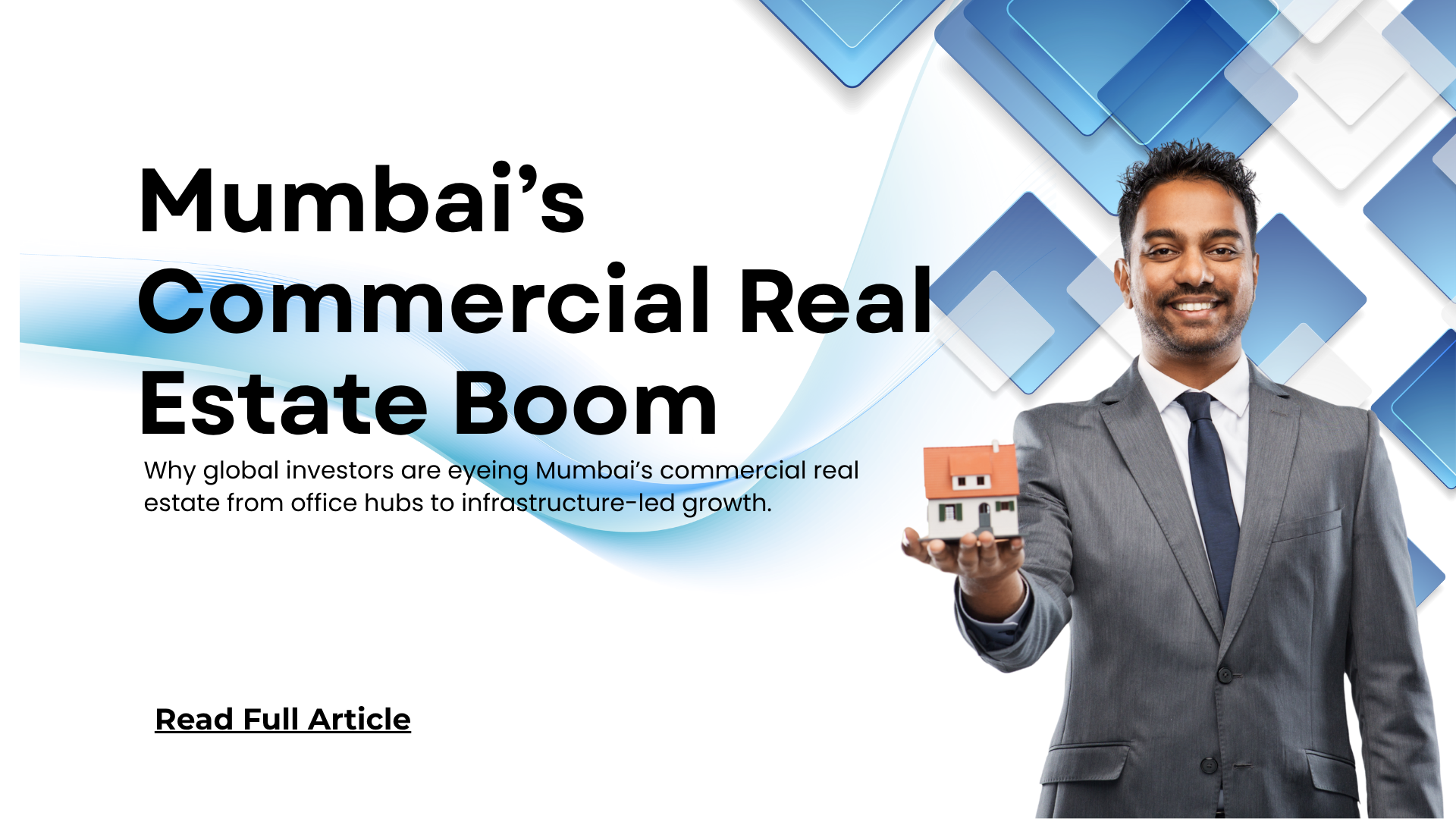
Why Mumbai’s Commercial Real Estate Is Attracting Global Capital
For decades, Mumbai has been India’s financial heartbeat – but in 2025, the pulse has quickened. The city’s commercial real estate market is not just surviving the global economic shifts; it’s thriving and drawing unprecedented foreign investment.
Global investors are increasingly looking beyond traditional residential opportunities and setting their sights on Mumbai’s booming office corridors, business parks, and tech-driven hubs.
1. India’s Financial Nerve Centre – Reimagined
Mumbai has always been home to India’s financial institutions, stock exchanges, and corporate headquarters. What’s changed now is the scale and sophistication of infrastructure supporting business growth.
From BKC’s Grade-A offices to Navi Mumbai’s IT parks, developers are building world-class spaces that rival Singapore and Dubai. This has caught the attention of institutional investors, REITs, and private equity firms seeking high-yield, long-term assets.
2. The Infrastructure Advantage
A massive infrastructure push – Mumbai Metro expansion, the Navi Mumbai International Airport, the coastal road, and the trans-harbour link – is redefining accessibility and reducing commute times.
This has created new micro-markets across Thane, Navi Mumbai, and even Kanjurmarg and Powai, each rapidly turning into business magnets. Global investors love connectivity-driven value appreciation, and Mumbai’s blueprint fits perfectly.
3. Demand from the Digital Economy
Post-pandemic, Mumbai’s economy has diversified beyond finance and media into IT, fintech, e-commerce, and start-ups. These sectors require flexible office spaces and tech-ready infrastructure.
The hybrid work model has shifted demand from traditional CBDs (Central Business Districts) to collaborative, managed office spaces. That’s why international players like Blackstone, Brookfield, and GIC are expanding their portfolios here – betting on India’s growing digital economy.
4. Strong Rental Yields & Long-Term Value
While residential real estate in Mumbai is often seen as expensive, the commercial segment offers more attractive returns.
- Average office yields: 8–10%
- Rental growth: 10–12% annually in prime locations
- Low vacancy rates: Especially in Grade-A properties
These metrics make Mumbai one of Asia’s most promising commercial destinations, alongside Singapore and Shanghai – but with a far larger growth runway.
5. ESG & Sustainability at the Core
The new wave of commercial projects in Mumbai focuses heavily on green buildings, energy efficiency, and ESG compliance.
This isn’t just a marketing buzzword, it’s now a global investment prerequisite. International funds prioritize assets with sustainability certifications like LEED and IGBC, further propelling Mumbai’s reputation as a future-ready market.
6. From Cost to Strategy
For corporates, Mumbai is no longer just an expensive business address. It’s a strategic growth base offering access to talent, connectivity, and credibility.
For investors, the city represents long-term capital preservation with upside potential – a rare combination in today’s uncertain global landscape.
Mumbai’s commercial real estate isn’t just booming, it’s maturing. The influx of global capital signifies confidence in the city’s long-term economic fundamentals.
With rising infrastructure investments, digital transformation, and an evolving corporate ecosystem, Mumbai continues to prove why it remains the commercial capital of India and now, a global contender.


